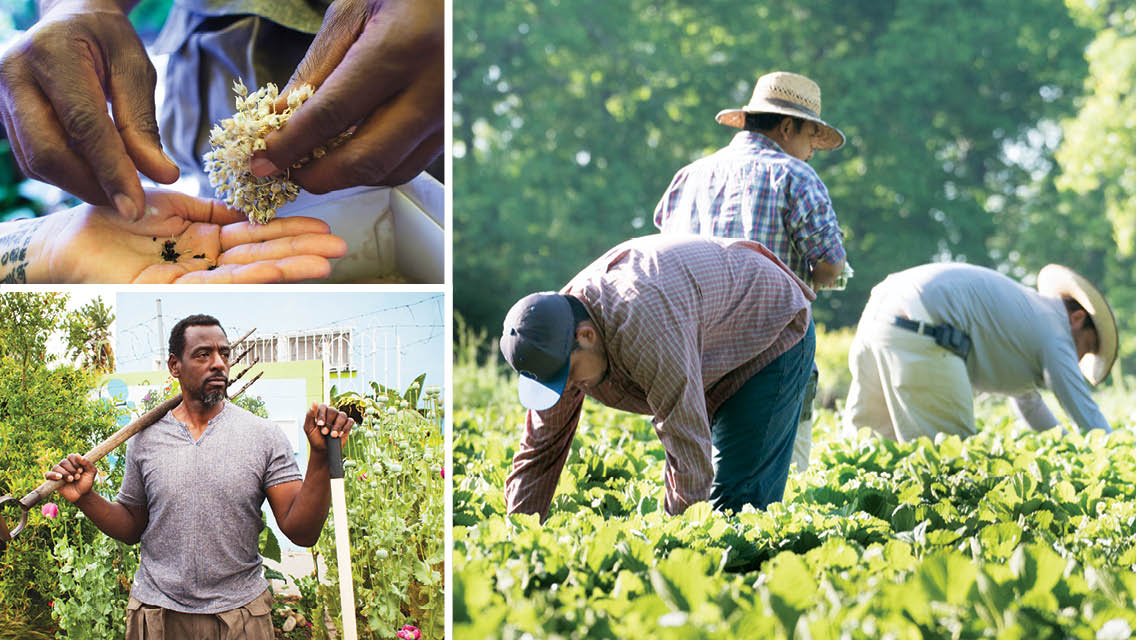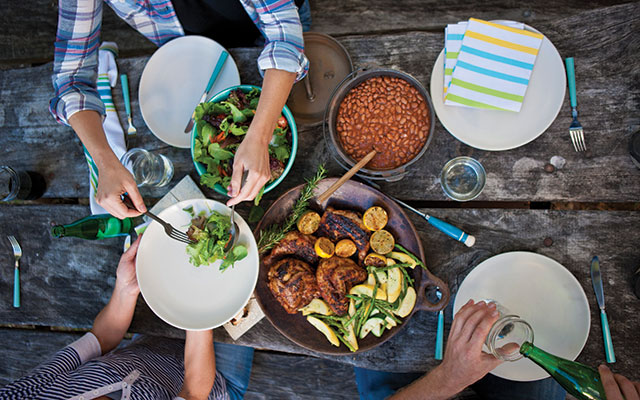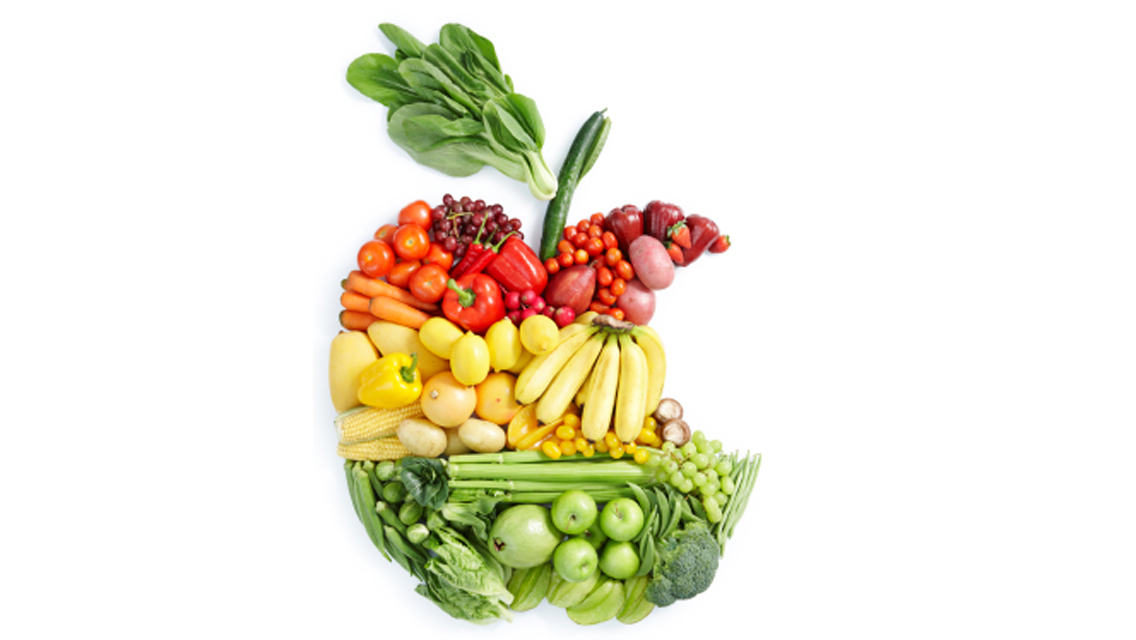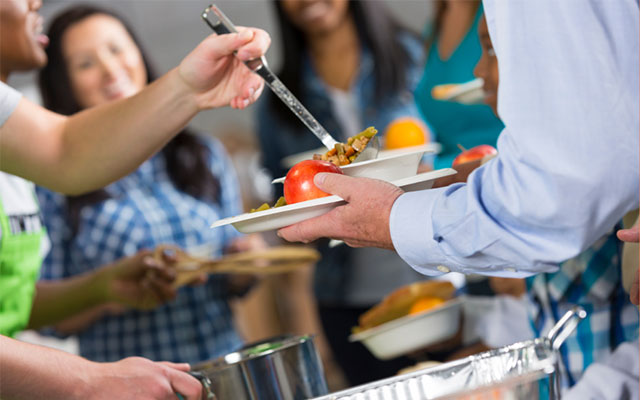It started with a vegetable garden. Ron Finley planted the seeds on the parkway, the strip of land between the sidewalk and the street, in front of his home in South Central Los Angeles. His goal was to offer the resulting produce free of charge in his neighborhood, where most other food came from drive-thru windows and convenience-store shelves.
City officials vowed to halt Finley’s self-described gangsta gardening. But eventually, with the support of community members and other activists, he convinced council members to change the law instead. Since then, the Ron Finley Project has only grown.
Food deserts aren’t unique to South Central LA. The U.S. food system delivers plenty of inexpensive processed food while limiting access to affordable fresh produce. In the long run, the negative effects of cheap processed foods are myriad, including higher rates of heart disease, cancer, and type 2 diabetes.
These issues fuel the food-justice movement, which considers access to healthy food a human right and demands a paradigm shift to end food-related inequities.
To understand food justice, we first must acknowledge that we’re all currently participating in a food system that leaves many people sick, hungry, and malnourished. But we have the power to change it.
A just food future includes providing access to fresh produce, supporting workers’ rights, leveraging food sovereignty, and adopting regenerative agriculture to create a future of sustainable farming.
Increasing Access
The United States is one of the wealthiest nations in the world, yet a 2020 study found that 44 percent of low-income adults were food insecure, meaning they lacked consistent, reliable access to affordable, nutritious food. The ongoing COVID-19 pandemic has shown that a lack of healthy food puts low-income communities of color at greater risk during a public-health crisis.
One aim of the food-justice movement is to eliminate food disparities. But the focus also falls on the architecture of injustice that keeps working-class families perpetually food insecure.
“The United States was founded on a food system that relied on the work of enslaved people and the theft of land from Indigenous communities,” explains Raj Patel, author of Stuffed and Starved: The Hidden Battle for the World Food System. Systemic racism created communities like Finley’s in South Central, where healthy whole foods are largely inaccessible. According to the USDA’s most recent report, some 19 million Americans live in these food deserts.
“The United States was founded on a food system that relied on the work of enslaved people and the theft of land from Indigenous communities.”
New York City community activist Karen Washington refers to the discriminatory policies that limit marginalized communities’ ability to purchase fresh foods as food apartheid.
“These communities need affordable housing, rent control, and single-payer healthcare,” Patel argues. These interventions would allow people suffering from food apartheid to spend more of their budget on healthy foods.
President Obama’s 2016 Global Food Security Act (GFSA) was landmark legislation recognizing the need for food security worldwide. The law guarantees funding for food-security investments, specifically for small-scale producers and female farmers.
GFSA also supports the global Feed the Future (FTF) initiative, which works with farmers to improve agricultural practices, strengthen communities, and increase income. FTF estimates it has helped 23.4 million people rise above the poverty line and has helped lift 5.2 million families out of hunger.
Supporting Farmworkers’ Rights
The U.S. government offers little labor protection for farmworkers, who play a critical role in the food-system infrastructure. As a result, farmworkers are more vulnerable to wage theft and earn some of the lowest wages of the labor force.
“Farmers depend on migrant labor and the hands of communities of people of color but don’t want to pay for it,” Patel says. “The food system has always depended on workers being underpaid.” Farmworkers also endure hazardous working conditions: exposure to pesticides, risk of heatstroke, and more.
“The housing provided can be substandard. There are instances of antibiotics given to animals being stored in refrigerators workers use to store their food,” says Brian DeVore of the Minnesota-based Land Stewardship Project. “With climate change, conditions are becoming brutal for workers in the heat. We’ve got to give people breaks, shade, and plenty of hydration.”
In 2019, New York state passed the Farm Laborers Fair Labor Practices Act, which went into effect in 2020. It guarantees farmworkers the right to collectively bargain and receive essential benefits. Other states have proposed similar legislation.
And, in 2021, Long Island’s Pindar Vineyards became the state’s first agricultural workplace to unionize, with the goal of improving working conditions and offering access to healthcare and retirement funds.
Backing Food Sovereignty
While the corporate-centric food system is profit oriented, food sovereignty requires recognizing that food is not a commodity but a human right. Brooke Bridges, food-justice assistant manager of Soul Fire Farm (SFF), explains that food sovereignty doesn’t center on corporations or change according to market forces. “It provides food for the community needs at the discretion of the community.”
Located in Petersburg, N.Y., SFF offers the majority of its harvest to those living under food apartheid in the Capital Region of upstate New York. It also works to seed food sovereignty in its community through Afro-Indigenous farming workshops, which train food-justice activists in agricultural skills. “Community control is essential for folks to get back to their ancestries,” Bridges says. (For more on SFF’s work, see “The Audacity to Farm“.)
Food sovereignty aims to build localized systems to help consumers become less dependent on corporations.
Food sovereignty also aims to build localized systems to help consumers become less dependent on corporations. For SFF, that means supporting Black, Brown, and Indigenous land ownership so those communities can grow and raise their own food. SFF offers a weeklong immersion program to support Black, Indigenous, and Latinx growers.
It also works with the Federation of Southern Cooperatives on the Braiding Seeds Fellowship, which provides mentorship and stipends to new farmers “to support their livelihood on the land.”
Going Regenerative
Regenerative agriculture is an integrated approach to sustainable farming that promotes soil health and enables the soil to sequester carbon. DeVore, author of Wildly Successful Farming: Sustainability and the New Agricultural Land Ethic, observes that climate change is making soil health more crucial than ever, because healthy soil also means improved water quality and increased resiliency in the face of extreme weather. (For more on regenerative agriculture, see “Can Regenerative Agriculture Save Us?“.)
In Marine on St. Croix, Minn., Big River Farms teaches farmers of color about regenerative agriculture through organic-farming practices, cover cropping, and creating pollinator habitats.
Students of Finley’s gardening MasterClass also use regenerative methods in their gardens. “People are setting their sights on being free by growing food,” Finley says. “They see the power in detaching from a system that oppresses you.”
What You Can Do Now
The flaws in our food system can feel overwhelming, but we can each play a role in helping to build a more just food future for all. These are some things you can do:
- Make financial donations, or even gifts of land, to food-justice organizations led by Black, Brown, and Indigenous people. This may be the most actionable way to create food justice.
- Join a CSA (community-supported agriculture) program to bolster a farm. (For more on CSAs, see “5 Reasons to Opt for a CSA This Summer“.)
- Volunteer at a food bank, share seeds with low-income land cooperatives, or participate in community gardens that give produce boxes to people in need.
- Support politicians dedicated to protecting farmworkers and eliminating food insecurity.





This Post Has 0 Comments